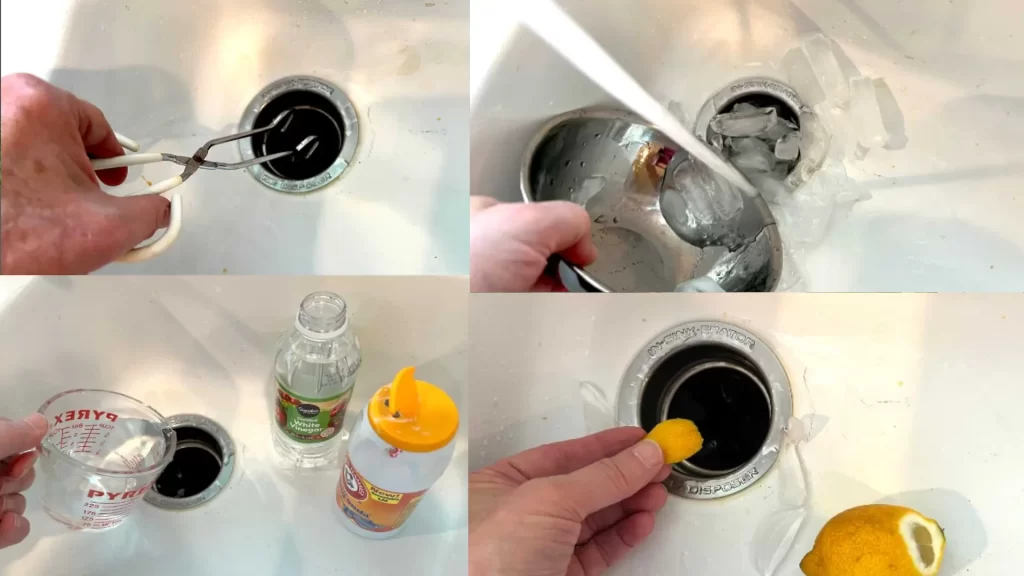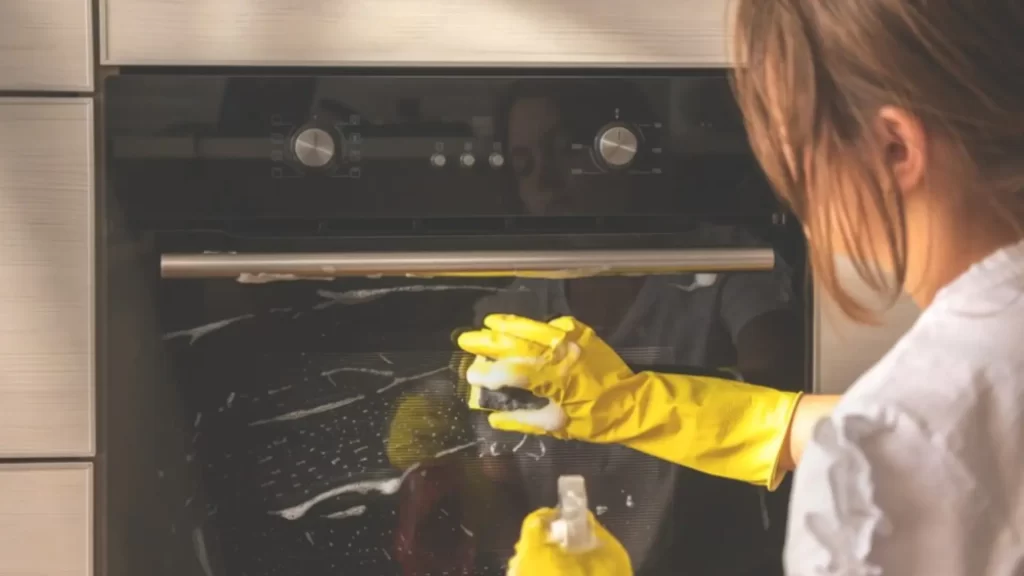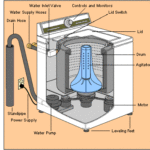Learn how to properly wash and dry your comforter to keep it fluffy, fresh, and free of dust and allergens. This DIY guide covers different comforter types and cleaning methods.
In This Article:
Comforters keep us warm and cozy all winter, but heavy use means they can accumulate dust, allergens, and dirt. Regularly washing your comforter is essential for both its longevity and your health. But washing it the wrong way can leave it flat and lumpy. This guide will show you how to wash your comforter properly, keeping it fluffy and fresh.
Types of Comforters and Their Cleaning Needs
Different comforter types require different care:
Down comforters. Filled with delicate natural down, these require gentle handling.
Down alternative/synthetic comforters. Made from polyester or other synthetic fibers, these are more durable and can withstand a wider range of washing temperatures.
Weighted comforters. Spot cleaning is usually best for weighted blankets, as machine washing can damage the filling (glass beads or plastic pellets). Always check the care label.
Preparing Your Comforter for Washing
- Check for any stains that need pre-treating before washing a comforter.
- Read the care label. This is crucial! Follow the manufacturer’s instructions for washing temperature, detergent, and drying method.
- Fold properly. Instead of balling up your comforter, use the accordion fold method (folding it neatly on the bed before transferring it to the machine). This helps distribute water and detergent more evenly and minimizes fabric damage.
Cleaning Methods
Use the appropriate detergent according to the comforter and the instructions below. While hand washing the comforter, use brushes that have soft bristles to keep the fabric safe from any probable damage. Several different cleaning methods are available, depending upon the circumstances:
Spot Cleaning
Spot cleaning your comforter is a great way to tackle small stains or spills without a full wash. The key is to act fast—the sooner you address the stain, the easier it will be to remove.
- First, gently remove any solid debris with a spoon or dull knife.
- Then, identify the type of stain, as different stains respond to different cleaning agents. For most stains, a mild detergent mixed with cool or lukewarm water will do the trick. For delicate comforters, like those filled with down, be extra gentle and consider using a detergent specifically designed for delicates.
- Test your chosen cleaning solution in an inconspicuous area of the comforter first to ensure it doesn’t cause discoloration. Using a clean, white cloth or paper towel, blot the stain—never rub, as this can spread it.
- Start from the outside edges of the stain and work your way inward. Gently dab the stained area with a cloth dampened with the cleaning solution.
- Once the stain is gone or significantly lighter, rinse the area by blotting with a clean cloth dampened with plain water.
- Finally, blot the area dry with another clean cloth and allow it to air dry completely. Avoid using heat from a hairdryer, as this can set any remaining stain.
Machine Washing
Machine washing a comforter can be more convenient than hand washing it, but it’s important to do it correctly to avoid damage. A large-capacity washing machine is essential. The comforter needs ample space to move freely during the wash cycle. If your home washing machine isn’t large enough, consider using a commercial-sized machine at a laundromat. Cramming a comforter into a small machine can prevent proper cleaning and could even damage both the comforter and the machine.Here are the step-by-step details:
- Check the care label. This is the most crucial step. The care label provides specific instructions from the manufacturer regarding washing temperature, detergent type, and drying methods. Adhering to these instructions will help prevent damage and maintain the comforter’s quality.
- Inspect for damage and pre-treat stains. Before washing, thoroughly inspect the comforter for any rips, tears, or loose seams. Repair these beforehand to prevent further damage during the wash cycle. Also, pre-treat any visible stains using the spot cleaning method described previously.
- Use the correct detergent. Use a mild detergent, especially for down or delicate comforters. Avoid harsh chemicals, bleach, or fabric softeners—these can damage the filling or fabric. For down comforters, use a detergent specifically designed for down.
- Load the comforter properly: Instead of stuffing the comforter into the machine, use the accordion fold method. Lay the comforter flat on your bed and fold it in thirds or quarters, like an accordion. This helps distribute the weight evenly and prevents the comforter from becoming a tangled mess during the wash. Place the folded comforter vertically in the washing machine drum.
- Select the appropriate wash cycle and water temperature. Choose a gentle or delicate cycle to minimize agitation. Use cool or warm water, as hot water can damage some fillings and fabrics. An extra rinse cycle is recommended to ensure all detergent residue is removed.
- Monitor the wash cycle (optional but recommended). If possible, keep an eye on the washing machine during the cycle, especially during the spin cycle. If the comforter becomes unbalanced and causes the machine to shake excessively, pause the cycle and redistribute the comforter.
- Proceed to drying. Once the wash cycle is complete, promptly transfer the comforter to the dryer or prepare for air drying, following the appropriate drying instructions. Leaving a wet comforter in the washing machine for an extended period can lead to mildew growth. See more about drying below.
Hand Washing
Hand washing a comforter is a gentler approach, ideal for delicate fillings or when a washing machine isn’t suitable. It requires more effort but can significantly extend the life of your comforter. Here’s a detailed, step-by-step guide:
- Prepare your washing area. You’ll need a large, clean bathtub or a similarly sized basin. Make sure it’s thoroughly clean to avoid transferring any dirt or grime to your comforter.
- Fill the tub with water and detergent: Fill the tub with lukewarm water. Avoid hot water, as it can damage some fillings and fabrics. Add a mild detergent suitable for your comforter’s material. For down comforters, use a down-specific detergent. Distribute the detergent evenly in the water.
- Submerge the comforter. Carefully place the comforter into the water, making sure it’s fully submerged. Gently press it down to remove any trapped air. Avoid crumpling or bunching it up.
- Agitate gently. Gently agitate the comforter in the water, using your hands to move it back and forth. Focus on areas that are visibly soiled. Avoid harsh rubbing, twisting, or wringing, as this can damage the filling and fabric.
- Soak the comforter: Allow the comforter to soak for 15 to 30 minutes, depending on how dirty it is. This allows the detergent to penetrate the fabric and loosen dirt.
- Drain the soapy water. Carefully drain the soapy water from the tub. You may need to press down on the comforter to help release the water.
- Rinse thoroughly. Refill the tub with clean, lukewarm water. Gently agitate the comforter again to rinse out the detergent. Repeat this process several times until the water runs clear and no suds remain. Thorough rinsing is crucial to prevent detergent residue from remaining in the comforter.
- Remove excess water. This is the most challenging part of hand washing a comforter. Gently press down on the comforter to remove as much water as possible. Avoid wringing or twisting—this can damage the filling. You can also carefully roll the comforter to gently squeeze out excess water.
- Prepare for drying. Because the comforter will be very heavy with water, you’ll need to support it during transfer. Ideally, have someone help you lift it out of the tub and onto a clean, dry surface or directly to your drying area.
- Air dry thoroughly. Lay the comforter flat on a clean, dry surface, ideally outdoors on a sunny, breezy day, and air dry as discussed below.
Drying Your Comforter for Maximum Fluffiness
Washing is only half the battle; proper drying is key to restoring your comforter’s original loft.
Machine Drying
Use the lowest heat setting to prevent scorching or melting any synthetic fibers. Dryer balls (a reusable, spherical object that you toss into your clothes dryer along with your laundry)or clean tennis balls are a great way to break up clumps of filling and promote airflow. Be sure your dryer is large enough to accommodate the comforter comfortably. Pausing the cycle every 30 to 60 minutes to manually fluff and redistribute the filling will help prevent clumping and speed up drying time.
Air Drying
Air drying is ideal for delicate comforters or those too large for your dryer. Choose a dry, sunny day with good airflow. Lay the comforter flat on a clean surface, turning it regularly, or drape it evenly over multiple clotheslines to distribute the weight. Avoid prolonged exposure to direct sunlight, which can fade colors and weaken fibers. If drying indoors, ensure good ventilation with open windows and fans.
Make sure the comforter is completely dry before using or storing it to prevent mildew growth. This can take several hours or even a couple of days depending on the weather and comforter thickness.








 Don Vandervort writes or edits every article at HomeTips. Don has:
Don Vandervort writes or edits every article at HomeTips. Don has:




